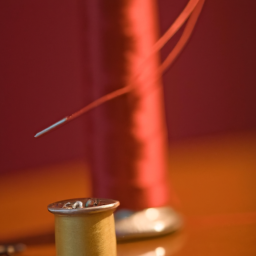
?
The invention of the sewing machine revolutionized the fashion and textile industries, making it possible to produce clothing and other textiles on a large scale. Let’s delve into the fascinating history of this remarkable invention!
The Early Beginnings
The first patent for a mechanical device designed for sewing was granted to British inventor Thomas Saint in 1790. However, there is little evidence to suggest that his machine was ever built. It is Isaac Singer, an American inventor and entrepreneur, who is credited with creating the first practical sewing machine.
The Rise of the Sewing Machine
In 1851, Isaac Singer introduced the first commercially successful sewing machine. His machine had a straight needle, a foot pedal, and moved the fabric in a way similar to modern machines. The introduction of this sewing machine marked a turning point in the garment industry, as it allowed for much faster and more efficient production of clothing.
Following Singer’s success, other inventors and companies began developing their own versions of the sewing machine. The machines continued to evolve, with new features being added over time. Zigzag stitching, buttonholers, and various stitch patterns were among the innovations that enhanced the versatility and capabilities of the sewing machine.
The Industrial Revolution and Beyond
By the late 19th century, the sewing machine became a crucial tool in the industrial revolution. It allowed for mass production of clothing, which drastically reduced the costs and increased the availability of garments. Prior to the sewing machine, clothing was primarily sewn by hand, making it time-consuming and costly.
In the early 20th century, electric sewing machines were introduced, further increasing the speed and efficiency of textile production. These machines eliminated the need for manual operation and propelled the sewing machine industry forward.
Modern Sewing Machines
Today, sewing machines have come a long way from their humble beginnings. They are now highly advanced, equipped with computerized controls and automated features. Modern sewing machines can perform various complex tasks, including embroidery, quilting, and even pattern digitization.
The development and innovation of the sewing machine have paved the way for the rise of fashion industries worldwide. It has given individuals the ability to create their own clothing and express their creativity through sewing.
In Conclusion
The sewing machine has a rich and transformative history, revolutionizing the fashion and textile industries. From its modest beginnings to the highly advanced machines we have today, it has played a significant role in shaping the way we create and produce clothing.
So, the next time you sew a button or stitch a garment, take a moment to appreciate the ingenuity and evolution of the sewing machine!




